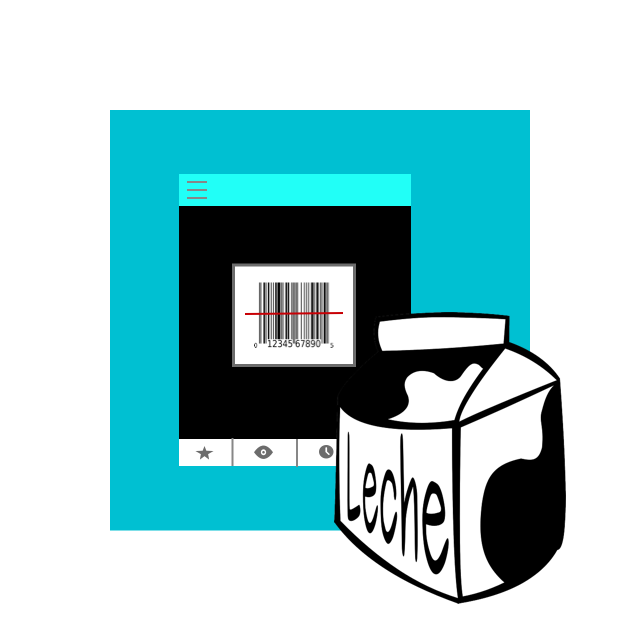
There is a strong link between food allergies and hay fever, nutritionist Ellie Bain tells Hannah Twiggs. Here’s how you can manage your symptoms through your diet
READ ARTICLE HIDE ARTICLE
The UK is in peak grass pollen season and record levels of people are experiencing severe hay fever flareups due to unusually high pollen counts across the country.
Intermittent wet days tend to produce a more intense hay fever season. Combine this with the hot weather that produces a higher pollen count, the summer we’re heaving is a hay fever sufferer’s worst nightmare.
Luckily, there are some effective ways to manage this allergy, including through your diet.
Ellie Bain, senior nutritionist at recipe box company Gousto, says: “There’s a strong link between certain food allergies and pollen allergies – known as pollen-food syndrome (or oral allergy syndrome) – this is an allergic reaction to foods that have similarities in their makeup to certain pollens.”
Foods linked to these pollens include apples, strawberries, kiwi, hazelnuts and almonds, says Bain, as well as carrots, cherries and tomatoes. “When eaten raw, these foods could actually aggravate hay fever symptoms, giving you that scratchy throat and watery eyes,” she explains. “On the flip side, there are some wonder ingredients that can actually alleviate hay fever too.”
Give the following foods a try to help soothe symptoms.
This health hero of the spice world has so many benefits, mainly thanks to the active ingredient curcumin. From strong antioxidant properties that can help manage heart disease and build the immune system, to being a powerful natural anti-inflammatory that can ease arthrities and also allergies.
Curcumin has been shown to target inflammation associated with histamine release and therefore alleviate hay fever symptoms. The good news is there are so many delicious recipes that use turmeric as it’s such a diverse ingredient. Next time you cook rice, try whipping up a turmeric broth to boost your absorption of its many benefits, or create a turmeric-yoghurt dressing for your next salad.
Often essential to a great dish, these ingredients are also packed with quercetin, which acts as a natural antihistamine and anti-inflammatory. This means they can help battle hay fever symptoms.
Red onions have the highest concentration of the allergy relieving compound of the onion family and they are best eaten raw and as fresh as possible – they start to lose quercetin as they get old.
Garlic is also a natural antibiotic so it gives a boost to the immune system and can even prevent the symptoms of hay fever. This is also most effective when eaten raw as well as crushed.
Toss raw red onions and crushed garlic into a salsa for a delicious helping of hay fever management.
Foods that are high in vitamin C such as broccoli are great for hay fever sufferers. Vitamin C is essential for keeping the immune system healthy, acting as a natural antihistamine it can have anti-inflammatory properties. One cup of raw broccoli will give a significant boost of vitamin C.
Whilst most people enjoy broccoli cooked, there are some delicious recipes you could try raw broccoli in such as this tamari mushroom and broccoli bowl – the raw broccoli will add an extra crunch but with all the same tastiness.
Mushroom and broccoli bowl with miso dressing
Fill your bowl with a selection of umami-rich mushrooms, broccoli, protein-packed quinoa and quick-pickled carrot ribbons. Then drizzle your colourful salad with a sweet miso dressing and dig in.
Serves: 2 (double for 4)
Ingredients:
160g chestnut mushrooms
15ml rice vinegar
1 red chilli
1 carrot
150g portobello mushrooms
5g toasted sesame seeds
15g fresh root ginger
130g quinoa
17g white miso paste
25g agave syrup
15ml tamari soy sauce
15ml toasted sesame oil
1 broccoli
Method:
1. Preheat the oven to 200C/180C (fan)/gas 6. Top, tail and peel the carrot[s], then continue to peel lengths until you end up with a pile of carrot ribbons. Add the carrot ribbons to a small bowl with the rice vinegar and set aside for later – these are your quick-pickled carrot ribbons.
2. Whilst the carrots are pickling, slice the chestnut mushrooms and keep the portobello mushrooms whole. Add the sliced chestnut mushrooms and whole portobellos to one side of a tray. Drizzle over the tamari soy sauce and ½ tbsp [1 tbsp] vegetable oil and give everything a gentle mix up until coated.
3. Cut the broccoli into 6 [12] wedges. Add the broccoli wedges to the other side of a tray (or a separate one!) with ½ tbsp [1 tbsp] vegetable oil and a pinch of salt and give them a good mix up.
Put the tray[s] in the oven and cook for 20-25 min or until everything is cooked through, tender and golden – this is your tamari mushrooms and roast broccoli.
4. Meanwhile, rinse the quinoa in a sieve under cold running water. Add the quinoa to a pot with a lid with 250ml [500ml] cold water and bring to the boil over a high heat.
Once boiling, reduce the heat to low and cook, covered, for 18-20 min or until all the water has absorbed and the quinoa is tender. Once cooked, remove from the heat and leave to steam-dry, uncovered, until serving
5. Whilst everything is cooking, peel (scrape the skin off with a teaspoon) and grate (or finely chop) the ginger.
6. Combine the grated ginger, white miso paste, toasted sesame oil and agave with 2 tbsp [4 tbsp] water and a pinch of salt in a small bowl. Stir it all together – this is your miso dressing.
7. Slice the red chilli[es] into rounds. Serve the tamari mushrooms and roasted broccoli over the quinoa and drizzle the miso dressing all over. Drain the quick-pickled carrot ribbons and serve them to the side. Garnish with the chilli rounds (can't handle the heat? Go easy!) and sesame seeds. Enjoy!
Whilst packed with vitamin C, this juicy fruit also contains the enzyme bromelain. You might have to eat a lot of pineapple to consume enough to feel the benefit but this enzyme fights inflammation, helping to reduce swelling and irritation caused by pollen allergens – who knew!
Pack your pineapple in with this recipe for crispy baked tacos with pineapple salsa.
Crispy baked tacos with refried beans
Plant-based tacos that are too good to miss. You’ll bake homemade refried beans in tortillas until crisp, then sprinkle with a zingy pineapple salsa to serve.
Serves: 2 (double for 4)
Ingredients:
6 plain tortillas
10g coriander
2 tsp smoked paprika
220g canned pineapple
1 tsp ground cumin
1 lime
1 tsp dried chilli flakes
400g canned black beans
20g chipotle paste
200g canned tomato frito
1 spring onion
125g cherry tomatoes
1 garlic clove
Method:
1. Preheat the oven to 220C/200C (fan)/gas 7. Curl the tortillas into a U-shape and add them to an oven-proof dish (or two). Drizzle the tortillas with olive oil and put the dish[es] in the oven for 5 min or until the tortillas are beginning to crisp. Once done, remove them from the oven and set aside – these are your crispy tortillas.
2. Meanwhile, peel and finely chop (or grate) the garlic. Drain and rinse the black beans. Heat a large, wide-based pan (preferably non-stick) with a drizzle of olive oil over a medium heat. Once hot, add the smoked paprika, ground cumin, chilli flakes (can’t handle the heat? Go easy!), chopped garlic and drained black beans and cook for 30 secs.
3. Add the chipotle paste (not a fan of spice? Just add a little!) and cook for 1 min – these are your spicy beans. Add the tomato frito and 100ml [200ml] cold water to the spicy beans and cook for 5-8 min or until the sauce has thickened.
4. While the sauce thickens, chop the cherry tomatoes roughly. Trim, then finely slice the spring onion[s]. Chop the pineapple rings roughly (reserve the juice!). Chop the coriander finely, including the stalks
5. Once the sauce has thickened, remove the spicy beans from the heat, squeeze in the juice of ½ [1] lime and mix to combine. Gently crush the beans with a masher a few times – these are your refried beans.
6. Divide the refried beans between the crispy tortillas and return the dish[es] to the oven for a further 5 min or until golden and crisp – these are your crispy baked tacos.
7. While the tacos are in the oven, combine the chopped cherry tomatoes, chopped pineapple, chopped coriander and sliced spring onion in a bowl. Add 1 tsp [2 tsp] of the reserved pineapple juice, 1 tbsp [2 tbsp] olive oil and a generous pinch of salt and pepper and give everything a good mix up – this is your pineapple salsa. Cut the remaining lime into wedges. Top the crispy baked tacos with the pineapple salsa. Garnish with a lime wedge.
It’s not yet scientifically proven but there’s a theory that by eating local honey early in the season, you are consuming small bits of pollen from your local area. The body then starts to immunise itself against this specific type of pollen.
Eating honey has been proven to have a whole host of other health benefits such as fighting bad bacteria and soothing sore throats. There is also so much you can do with it in the kitchen. Try a sticky honey mustard glaze at your next BBQ.
Fish like salmon, trout and cod could keep hay fever symptoms at bay thanks to the anti-inflammatory properties of omega-3 fatty acids they contain. The allergic response to hay fever causes inflammation of the protective tissue of the eyes and inside the nose, so all anti-inflammatory foods can help alleviate the irritation caused by hay fever.
Try this creamy salmon and spinach fusilloni for a hearty bowl of hay fever relief.
Creamy salmon and spinach fusilloni
For the ultimate midweek treat, you’ll coat fusilloni pasta with a creamy lemon sauce and flake in pan-fried salmon. Top with chives and black pepper to serve. Elegant, satisfying and so easy.
Serves: 2 (double for 4)
Ingredients:
200g fusilloni pasta
2 x 110g skin-on salmon fillets
120g baby leaf spinach
15ml Chinese rice wine
1 lemon
50g soft cream cheese
11g vegetable stock
5g chives
Method:
1. Boil a kettle. Add the fusilloni to a pot of boiled water with a large pinch of salt and bring to the boil over a high heat. Cook the fusilloni for 10-12 min or until cooked with a slight bite. Once done, drain the fusilloni, reserving a large cup of the starchy pasta water.
2. Heat a large, wide-based pan (preferably non-stick) with a drizzle of olive oil over a medium heat. Once hot, add the salmon fillets, skin-side down, with a pinch of salt and cook for 2-3 min on each side or until browned on both sides and almost cooked through. Once browned, transfer to a plate and set aside for later.
3. Meanwhile, dissolve the vegetable stock mix in 150ml [300ml] boiled water. Chop the chives finely. Cut the lemon[s] in half.
4. Return the pan to a medium-low heat. Add the Chinese rice wine and cook for 1 min or until evaporated. Add the vegetable stock and soft cheese and cook for 3-4 min or until the sauce has thickened to a single cream-like consistency.
5. Once thickened, wash the spinach, then add it to the sauce and cook for 1-2 min or until starting to wilt.
6. Flake in the salmon and add in the drained fusilloni, then cook for 2 min or until the pasta is fully coated in the sauce and the salmon is cooked through.Tip: Add a splash of the starchy pasta water if it’s looking a little dry!
Season with a pinch of salt and a generous grind of pepper
7. Add the juice of ½ [1] lemon and give everything a good mix up – this is your creamy salmon & spinach fusilloni. Chop the remaining lemon into wedges. Serve the creamy salmon & spinach fusilloni and garnish with the chopped chives and a lemon wedge
Not all food sare so kind to our allergies. Some contain high levels of histamine, which can even intensify symptoms and therefore should be avoided if you suffer from hay fever.
These include:
Chocolate
Matured cheese
Fermented vegetables such as kimchi and sauerkraut
Alcohol
Cured or fermented meats such as salami and sausages
Shellfish
Aubergine
Recipes from Gousto, the UK’s best value recipe box with 75 meals to choose from every week. Visit gousto.co.uk for more.
Learn More from YAHOO!News





